| How-To - Project Vehicles
So you want to start your own off-road park? Great! We need more of 'em. The more the merrier, as they say. To help you accomplish your dream, we contacted a number of off-road park owners and asked them to give us a basic overview of what's required to start a park from land acquisition to day-to-day management.
Owning an off-road park is gravy. You simply acquire a chunk of land, charge an arm and a leg to get in, and let the users go hog wild and make the trails. While they're 'wheeling, you oversee the expansion of your private runway so you can buy a bigger jet ...
Um, right. Now, we know you don't believe a word of that. The stark reality is that developing and managing an off-road park is a gargantuan task that will swallow money, test your patience, and consume your time. Sorry to be so blunt, but you need to know that right up front.
Interestingly, even with the sacrifices required, every park owner we spoke with seemed genuinely happy with their ventures, and all were enthusiastic. If you're thinking of starting an off-road park, here are a few things you should know.
The number one recommendation that park owners offer is to ensure that you have a clear business plan in place before you even attempt to start a park. This is good advice considering that ORV parks are indeed a business and can fail just as quickly as any other business.
Controlling costs and creating a steady revenue stream are paramount to success. The vast majority of privately owned parks are open on weekends only. This means that you, as the owner, probably won't be generating a full-time income from the park, yet the property may require your every spare moment when you're not at your real job. Park owners tell us that spooling up a park most often takes years and not weeks or months.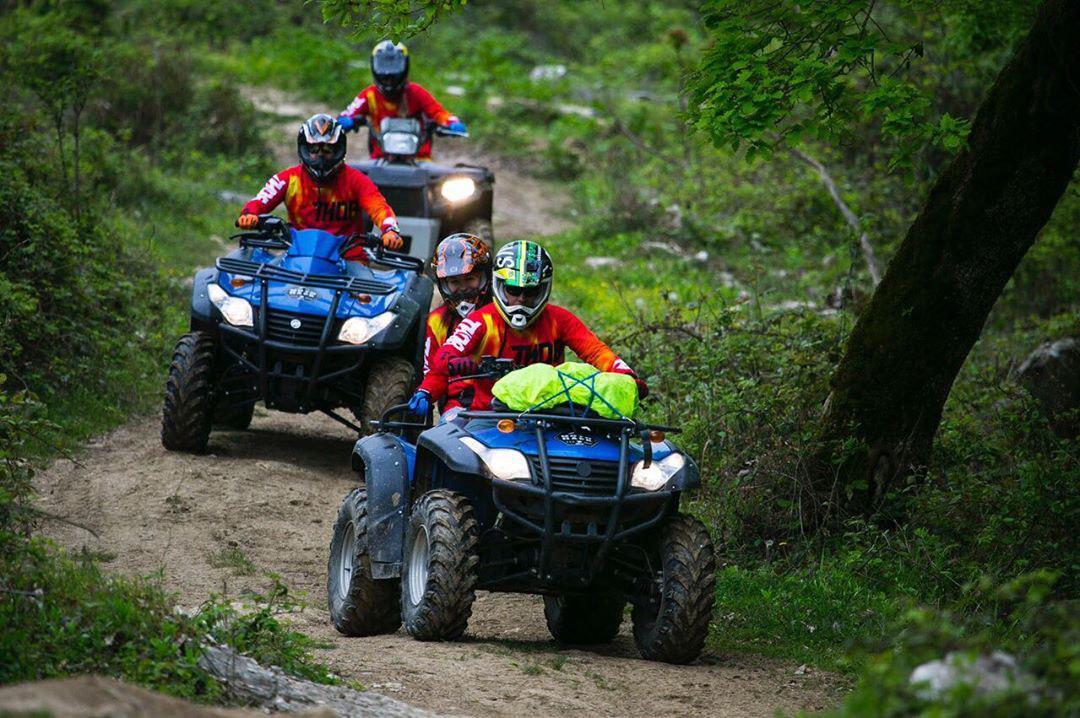 Heck, the state or local red tape can take years to cut. This means that being "in the red" financially is standard operating procedure for the first few years. Many park owners also told us that they ended up injecting much larger amounts of cash into their park than they originally projected.
Heck, the state or local red tape can take years to cut. This means that being "in the red" financially is standard operating procedure for the first few years. Many park owners also told us that they ended up injecting much larger amounts of cash into their park than they originally projected.
Some park owners told us that, due to sheer numbers, the vast majority of their income is generated by ATVs and not four-wheel-drive rigs. Thus, your business plan should address whether or not you can afford to allow or not allow ATVs to ride on your property. Allowing ATVs may be out of your control, however, because there have been many instances where neighbors object to the noise associated with ATVs.
This brings us to another point: public relations. If you're not a "people person," you'll be in a pickle because owning an off-road park requires a significant amount of public relations savvy. The reality is that local governments and neighbors react favorably if the park is a professional organization that has the local community in mind.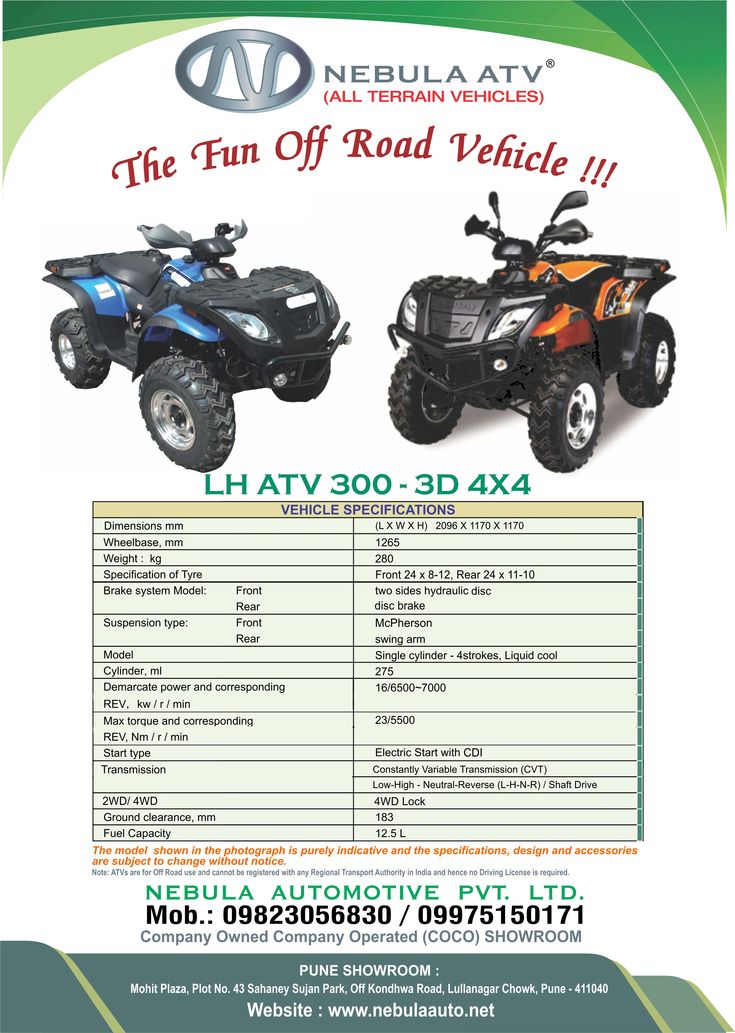 Sometimes, though, even professionalism and a good plan won't help. More than one park has been forcibly closed after politics reared its ugly head, even after the proper permits were issued. Public relations with paying customers is also important. Be prepared for the fact that eventually you'll make someone mad and they'll talk smack about you and your park on some Internet message board. This is where having a "thick skin" comes in handy.
Sometimes, though, even professionalism and a good plan won't help. More than one park has been forcibly closed after politics reared its ugly head, even after the proper permits were issued. Public relations with paying customers is also important. Be prepared for the fact that eventually you'll make someone mad and they'll talk smack about you and your park on some Internet message board. This is where having a "thick skin" comes in handy.
A good business plan will dictate that the closer your park is to a population center, the better chance you'll have at drawing 'wheelers and generating revenue. Some potential park owners go so far as to hire a consulting service to analyze potential draw. The trick is to purchase land that is close to a town, but not too close to densely populated suburbia inhabited with people who may get annoyed when the park gets spooled up (neighbors can either be your biggest foe or your greatest ally). It's wise to stay away from state or national parks where politics is always in play.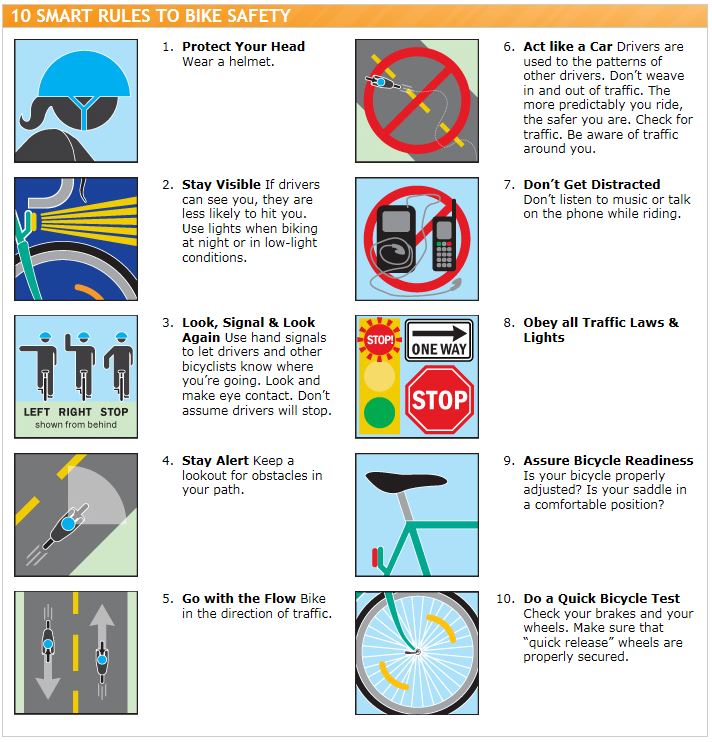 Also remember that if the land you're considering is surrounded by open land where 'wheelers can ride for free, they may not pay to ride on your land.
Also remember that if the land you're considering is surrounded by open land where 'wheelers can ride for free, they may not pay to ride on your land.
Two prime (but certainly not the only) examples of ORV parks in a good location are the Badlands in Attica, Indiana, and Superlift Off Road Park in Hot Springs, Arkansas. Lodging, food, fuel, and parts are close, but the parks are removed from town. If your land is close to town, consider creating a buffer zone around the park to insulate it from the city. If your park is far removed from a town, consider offering amenities such as camping with showers and restrooms to facilitate visitors.
The more land the better, though we've seen some amazing things done with a minimal amount of real estate. You'll need to plan to set aside a large chunk of land for check-in, parking, and restrooms, not to mention the almost-mandatory campground. Some of the people we spoke with said that if you want to own a park, the fastest way is to buy an existing park as a turnkey investment.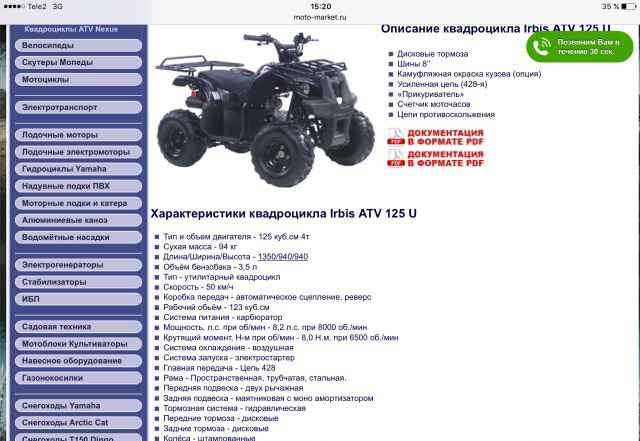 This allows you to step right in and go to work. If you want to start from scratch, the most popular method is to purchase land. Of course, this means that you will either need cash, excellent credit, or a group of investors. If land is $3,000 per acre and you want to buy 1,000 acres, simple math shows you'll need to generate $3,000,000. Add to that the cost of improvements, permits, property taxes, and so on. Another method is to lease the land, but this is often tricky because even seemingly iron-clad leases can be circumvented and leave you hosed (the closing of Paragon Adventure Park in Pennsylvania shows what can go wrong with a lease). However, with that said, today many parks exist using leased land, and everyone is happy and the parks are very successful.
This allows you to step right in and go to work. If you want to start from scratch, the most popular method is to purchase land. Of course, this means that you will either need cash, excellent credit, or a group of investors. If land is $3,000 per acre and you want to buy 1,000 acres, simple math shows you'll need to generate $3,000,000. Add to that the cost of improvements, permits, property taxes, and so on. Another method is to lease the land, but this is often tricky because even seemingly iron-clad leases can be circumvented and leave you hosed (the closing of Paragon Adventure Park in Pennsylvania shows what can go wrong with a lease). However, with that said, today many parks exist using leased land, and everyone is happy and the parks are very successful.
Finally, there are various government land grants or money grants available, but these vary wildly from state to state, so you would need to check with your local government to see what's available in your area.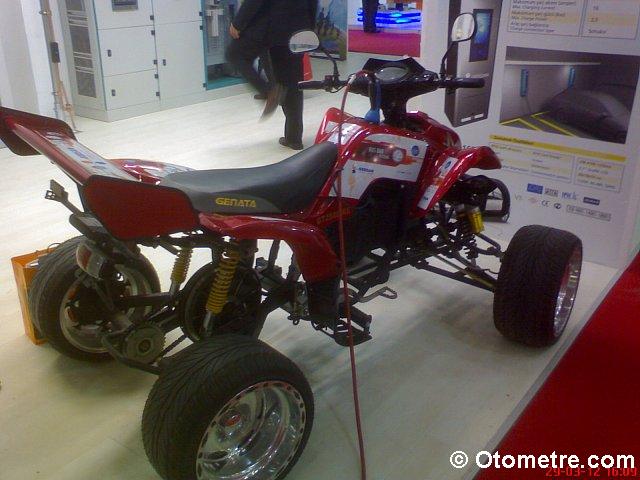 When it comes to actually choosing the land, abandoned stone quarries seem like the most natural land to use for a park, and they do work, but these often sheer-walled properties may require a significant amount of expense to render them safe and usable for four-wheel-drives. Park owners tell us that they look for land that contains a variety of types of terrain. Rocky soil works well because it isn't as susceptible to rutting after precipitation. Also consider that runoff and things of that nature are monitored by local government and the EPA, and they won't hesitate to enforce existing laws.
When it comes to actually choosing the land, abandoned stone quarries seem like the most natural land to use for a park, and they do work, but these often sheer-walled properties may require a significant amount of expense to render them safe and usable for four-wheel-drives. Park owners tell us that they look for land that contains a variety of types of terrain. Rocky soil works well because it isn't as susceptible to rutting after precipitation. Also consider that runoff and things of that nature are monitored by local government and the EPA, and they won't hesitate to enforce existing laws.
Ultimately, you want to create a park that people will want to come to again and again. Tom Wombles, who with his wife Debbie, owns Hannibal Rocks in Hannibal, Missouri, said it best when he noted that each ORV park has its own personality.
Park owners tell us that insurance is their biggest expense and there are only a couple of companies willing to underwrite ORV parks. If you can qualify for insurance, we're told that annual premiums for a full-time park range from $20,000 to more than $50,000. Figuring a $20,000 annual premium and a $15 per-vehicle day rate, this means that it'll take well over 1,300 paying customers to meet your premium. Speaking of the premium, it's all due at one time. There are finance companies that you can utilize to spread out the payment, but then you're incurring interest charges. If your park is only open on select weekends, your insurance premiums will be lower, but so will your income. We're told that some states have laws that shield operators of off-road motorsports venues from most litigation; however these do not always shield operators from true negligence. Another thing: One successful, experienced park owner told us that it's a good idea to see if liability waivers have withstood the test of time in the state you are looking to operate in.
If you can qualify for insurance, we're told that annual premiums for a full-time park range from $20,000 to more than $50,000. Figuring a $20,000 annual premium and a $15 per-vehicle day rate, this means that it'll take well over 1,300 paying customers to meet your premium. Speaking of the premium, it's all due at one time. There are finance companies that you can utilize to spread out the payment, but then you're incurring interest charges. If your park is only open on select weekends, your insurance premiums will be lower, but so will your income. We're told that some states have laws that shield operators of off-road motorsports venues from most litigation; however these do not always shield operators from true negligence. Another thing: One successful, experienced park owner told us that it's a good idea to see if liability waivers have withstood the test of time in the state you are looking to operate in.
Set 'em and enforce 'em. A few park owners told us that they were too lenient with rules at first and it came back to bite 'em. If rules say that alcohol is prohibited, vehicles must stay on trails, and everyone must wear seatbelts, then it must be enforced. Rules require constant enforcement, so this means that the owner of the park has to be the mobile enforcer or one has to be hired. And remember, park owners and friends fall under the same rules as paying customers.
If rules say that alcohol is prohibited, vehicles must stay on trails, and everyone must wear seatbelts, then it must be enforced. Rules require constant enforcement, so this means that the owner of the park has to be the mobile enforcer or one has to be hired. And remember, park owners and friends fall under the same rules as paying customers.
You're a 'wheeler, so you know what 'wheelers want. A successful park has a variety of 'wheeling options that integrate all 'wheeling disciplines. Something to remember is that guests won't be familiar with your land, so make sure all of the trails are clearly marked and rated. Detailed maps will also ensure that customers have a good time. If possible, create an infrastructure of easy roads that allow access to the entire property. Challenging trails can simply branch off of the main roads and the wider roads will facilitate recoveries. When it comes to building trails, many park owners have partnered with family-oriented off-road clubs as a source of volunteer labor. These clubs often donate their time for trail building, and in return for their labor, the park owners often trade out trail time to the club. If you don't want to go that route, you can build the trails yourself; though creating trails often requires the use of heavy equipment which must be rented. If you don't have experience in operating heavy equipment, you'll need to rent an operator too. Remember: Fresh new trails keep people coming back.
These clubs often donate their time for trail building, and in return for their labor, the park owners often trade out trail time to the club. If you don't want to go that route, you can build the trails yourself; though creating trails often requires the use of heavy equipment which must be rented. If you don't have experience in operating heavy equipment, you'll need to rent an operator too. Remember: Fresh new trails keep people coming back.
As more and more public land is closed, ORV parks fill the gap and give people what they want. Naturally this is a good thing. Now that you have a basic idea of the commitment a park requires, you can decide whether or not to take it to the next level.
Starting an off-road park isn’t the easiest business idea in the world, but it’s certainly possible with the right strategy and resources.
To start an off-road park, you’ll need a detailed plan and a suitable piece of land. The location should be close to town but out of zoning restriction areas. You’ll need to design engaging but safe trails and spread the word throughout the local off-road community.
In this article, we’ll go over the main steps required to start an off-road park. We’ll show you how to choose a plot of land, how to design the best trails, and how to spread the word about your new off-roading location. Additionally, we’ll go over some strategies for designing a park that’s safe, easy to maintain, and sustainable.
We created this article and these tips from analyzing the best private off-road parks and how they got started.
Finding some land for an off-road park is a little more difficult than finding a building lot. It’ll need to be accessible, affordable, and in a location where building an off-road park is allowed. Here are a few considerations for choosing land.
Here are a few considerations for choosing land.
The best place to build an off-road park is in an area with limited red tape. States with too much oversight can make it financially impossible to construct a simple off-road park, as can areas too close to cities.
A good workaround is to find a location in an unincorporated rural county. These areas often have very little zoning or none at all, which allows you to do almost anything with your land.
The vast majority of the physical landmass in America is like this. You can call county offices to find out what the permitting and zoning requirements are before purchasing land.
Land access is also a very important fact to consider. Since you’re running an off-road park, you’ll need to make sure drivers can actually get to the property.
Some plots of land are not accessible without traversing someone else’s private road, and a long train of off-road vehicles likely won’t be welcome. Be sure to find a property with direct access from a public road or highway—preferably one that’s paved.
Be sure to find a property with direct access from a public road or highway—preferably one that’s paved.
A good off-road trail shouldn’t be too far from where people live. Try to get as close to a town as possible, so people can visit in their afternoons instead of making a whole day trip. This may increase costs, but it’s worth it if you want a greater number of visitors.
Wooded lots are the most fun for off-roading, as are areas with dramatic terrain. Try to find a location where the cool spots are accessible (IE no random rock cliffs in the road) but also not too easy.
If it’s a wooded lot, you might have to clear trees to make room for the trail. This increases cost and time significantly, as clearing trees is a difficult task that usually requires heavy machinery. Just keep that in consideration when choosing a plot of land.
Designing the park is the fun part of the process and also one of the most important. You’ll want to design the trails to be as consistent as possible—IE, a difficult trail is difficult, and an easy trail doesn’t have any serious challenges.
You’ll want to design the trails to be as consistent as possible—IE, a difficult trail is difficult, and an easy trail doesn’t have any serious challenges.
If you’re on a smaller piece of land, you’ll have to make sure that the trail eventually loops back. All trials should reach an exit at some point—you don’t want two-way traffic on a narrow off-road trail. Here are a few more points to consider when drawing up your park plan:
Designate trails by vehicle type (trucks, ATVs, dirt bikes, etc.)
Make sure a fire truck or ambulance can access the parking area
The primary consideration for designing your trial should be traffic flow. As we said, you don’t want two vehicles meeting each other nose-to-nose in the middle of the trail. One-way trails that return are the best option, especially for high-traffic parks.
As we said, you don’t want two vehicles meeting each other nose-to-nose in the middle of the trail. One-way trails that return are the best option, especially for high-traffic parks.
You should have multiple trails with multiple difficulty levels, and they should be well-labeled, so people know what they’re getting into. These trails can intersect if people want a more challenging road, but there should always be another route that beginners and unmodified vehicles can take to get out.
Safety is an important factor to consider when designing an off-road park. If possible, ensure that there’s enough dedicated room in the parking area for emergency vehicles like fire trucks and ambulances. Also, install an emergency phone somewhere near the main area.
You can do a lot to prevent accidents, such as clearly marking trail directions and vehicle rules. For example, include periodic signage indicating which direction the trail travels and the difficulty of intersecting trails. Don’t forget to point to the quickest way off the trail as well.
Don’t forget to point to the quickest way off the trail as well.
Test each trail yourself before opening it to the public. Avoid designing trails that come too close to natural hazards, such as deep rivers or cliffs. If there is a water crossing, check the water after storms to make sure it hasn’t gotten deeper than the posted depth.
Additionally, establish a first aid station near the entrance and exit of the trails in case somebody needs emergency medical attention. These things will help make your park safer, and it will also put insurance companies at ease when you go to insure your business.
Maintenance must also be considered when designing an off-road park. Maintenance activities like inspecting the trail, filling in holes, and grating out washboards must be performed periodically due to regular wear and tear on the dirt road.
Come up with a system for removing stuck or broken vehicles from the trail. Any trail where automobiles operate should be accessible to towing equipment, and it helps to have a tractor on-site in case someone gets stuck and blocks off the trail. You can charge an extra fee for recovery services as well.
You can charge an extra fee for recovery services as well.
You should also consider investing in an ATV for the park. These vehicles can access almost every trail, and you can use them for quick road inspections or assessing a situation when someone reports a problem.
Once you’ve established your park and a way to monetize it, you’ll have to find a way to spread the word. Word-of-mouth is the best way to get more people to your park, and it has to be good and affordable to get popular organically. But that takes time, and there are a few strategies you can use in the meantime.
Start a social media page for your trail and feature people and their vehicles. People love getting their cars featured on someone else’s page (provided you obtain permission first), and it’s a great way to spread the word.
Social media ads are very inexpensive and highly targeted. You can target people in your area who are already interested in off-roading, and they have a good conversion rate.
Posting flyers on local bulletin boards and telephone poles is another way to spread the word. Another place to post flyers is at local auto parts shops, car dealerships, and mechanic shops. It sounds archaic, but these things actually work.
Giving away free stickers, sweatshirts, and hats is a great way to spread the word. If someone wears free merchandise or puts a sticker on their car, they become a walking advertisement for your off-road trail. Eventually, you can sell merchandise instead once people begin recognizing your park.
To start an electric start engine, turn the ignition key to the ON position, press the brake and press the green electric start button for no longer than 5 seconds.
ATVs usually shift automatically—the shift lever is used to shift up, down, neutral, reverse, and select park mode.
To start or increase speed, you need to press the thumb of your right hand on the throttle. The gearbox must be in the “H” or “L” position. The middle finger of the right hand rests on the front brake lever while driving, and the middle and index fingers of the left hand rest on the rear brake lever.
Also on the steering wheel there are buttons for turning on the four-wheel drive and locking the differential. Four-wheel drive will be needed when driving off-road, slippery roads, transporting goods and towing. A differential lock is needed so that the wheels of the ATV spin synchronously - for example, it will help to drive out if one of the wheels is stuck in the mud, and the second remains on a stable surface. When the lock is off, in such a situation, only the wheel that is stuck will spin.
Whether it is possible to turn on the four-wheel drive and blocking on the go and at what speed - should be indicated in the instruction manual. At the same time, regardless of the model of the ATV, the lock cannot be turned on after a jam, since the differential gears must engage without load.
1 - ignition key. 2 - starter button. 3 - light switch. 4 - signal.
1 - throttle lever. 2 - switch 2WD / 4WD. 4 - fuse.
1 - throttle lever. 3 - 4WD / LOCK differential lock switch. 4 - fuse.
Standing up makes it easier to avoid the ATV tipping over by shifting your body weight. There are 3 main racks:
The worst stance is when the back is tense, the person leans on his hands, and his legs are straight. In this case, the body does not absorb shocks and shocks, and the bones, intervertebral discs and joints experience a strong load. In addition, control over technique worsens and fatigue increases.
middle rack
A-pillar
rear pillar
Climbing involves shifting into low gear, landing in the front strut and moving at medium engine speeds. It is impossible to sharply press the gas when driving up a slope or mountain - there is a risk of rolling over.
When stopping in the middle of a hill, start carefully, as a sudden start will be followed by tipping over. If the ATV rolls backwards, you need to press the front brake lever, and after stopping, turn off the engine, put the equipment on the handbrake, turn around manually, slide down and try again.
To descend, you need to take the rear rack and shift into a lower gear. In order not to roll over, brake should be simultaneously front and rear brakes. To avoid skidding, you can not change the trajectory of movement and speed abruptly, as well as brake too hard. It is better not to touch the gas lever when descending.
To drive downhill, shift into low gear and shift your body weight towards the top. Don't hit the gas hard and don't brake hard. You can also fall when making a sharp turn. If the slope is steep and the ground on it is slippery, it is better not to risk it.
To enter a tight turn, lean on the outside footrest and tilt your upper body inward. On slippery surfaces, shifting forward will improve handling, and shifting back will improve the grip of the drive wheels with the road.
Before driving into deep mud, you need to make sure that there are no logs, large stones and other obstacles in it, and the soil is not marshy. You should drive smoothly, without sharp pressure on the gas lever. At a slow speed, high engine speeds should not be allowed - the wheels will begin to slip and dig deeper. If the ATV has sunk deep into the mud, after releasing it, you need to dry the brakes with a few clicks on the levers.
To estimate the trajectory of the ATV in advance, you need to look into the distance and not fix your eyes on any one object.
It is not necessary to drive into steep mountains and hills unless absolutely necessary, because if you lack experience, you can, for example, press the gas too hard or allow the engine to stop - both errors lead to a rollover.
ATV requires special equipment. It will protect against getting wet, hypothermia, wind and dirt, and will also reduce the risk of injury after a fall or collision.
Gears are transmission modes that allow you to adapt your ATV to different tasks and road conditions. Shifting increases traction or top speed.
In this article, we will tell you how to shift gears correctly on ATVs with different types of transmission so as not to break anything and confidently overcome any routes.
The CVT transmission is the most popular 4x4 utility ATV.
The variator consists of two pulleys. A belt is stretched between them, which rotates along a larger or smaller radius as the engine speed changes. This ensures a smooth change in gear ratio. In fact, the same thing happens as when moving gears in a manual transmission.
The variator is combined with the gearbox. The shift lever can be in five different positions:
L - downshift;
H - overdrive;
N - neutral;
P - parking lock;
R - reverse.
Downshifting allows the ATV to climb steep slopes, off-road, or haul loads more easily and without damaging the CVT. In overdrive, the technique can develop maximum speed. It is recommended to use it for driving faster than 10 km/h.
There is no conventional clutch on an ATV with a CVT. Instead, a centrifugal automatic. Therefore, before each shift, be sure to come to a complete stop, apply the brakes and reduce the engine speed to idle.
To stop, just remove your finger from the throttle trigger - the ATV will quickly slow down and stay even in the H or L position, until the driver again increases the engine speed.
For a long stop, it is better to switch to neutral. To prevent the equipment from rolling away, you can put a hand brake or gear P.
A manual transmission is usually used on small displacement rear-wheel drive ATVs. Structurally, it is similar to the transmission of a high-speed bicycle, only instead of sprockets there are gears. They are connected in different combinations depending on the selected gear.
In order not to break anything when shifting gears, there is a clutch. This mechanism decouples the transmission from the engine and allows the gears to engage without load. To control the clutch there is a separate lever on the steering wheel.
On an ATV with a manual transmission, the gears are shifted by a lever located at the left footrest. How exactly depends on the specific model. Popular options:
N is a neutral gear, in which the vehicle will not go anywhere. R is reverse.
This is how the ATV manual transmission looks like What is the difficulty. It can be difficult for a beginner to move off. If you release the clutch too quickly or add insufficient rpm, the engine will stall. If you give too much gas and drop the clutch, the vehicle will move with a jerk and may even jump out from under the rider.
What to do. At first, you can try to move off without gas at all - just release the clutch smoothly and slowly. This will help you feel the moment when the ATV is ready to go and you need to increase the engine speed.
What is the difficulty. At first it is not obvious when to switch.
What to do. You can focus on the sensations. If vibration is felt, the ATV twitches and accelerates sluggishly, you need to switch down, and if the engine “roars”, up. Another option is to look at the speedometer. Each gear has its own optimal speed range. Here are the average values: